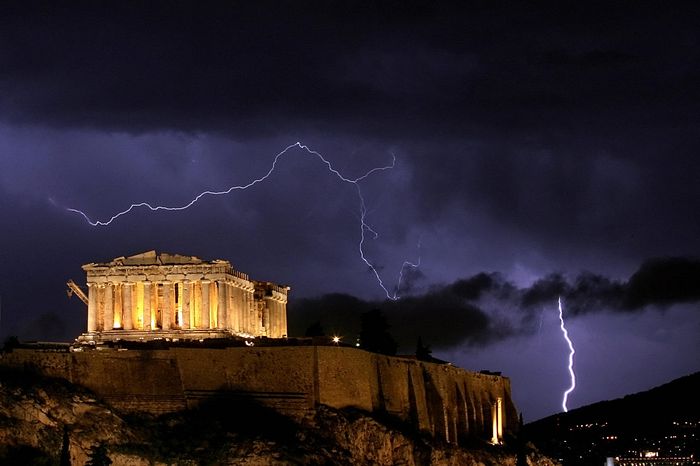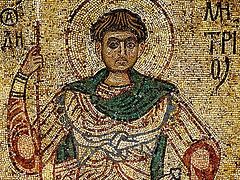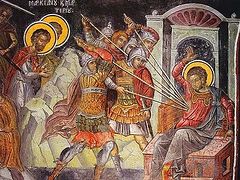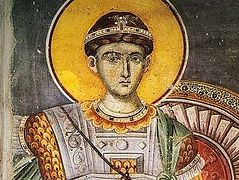There is a small Church of Great Martyr Demetrius of Thessaloniki near the Acropolis in Athens. It is marked as “the Church of Agios Dimitrios Loumbardiaris (that is, St. Demetrius the Bombardier)” on tourist maps. The reason behind this name is in the following story.
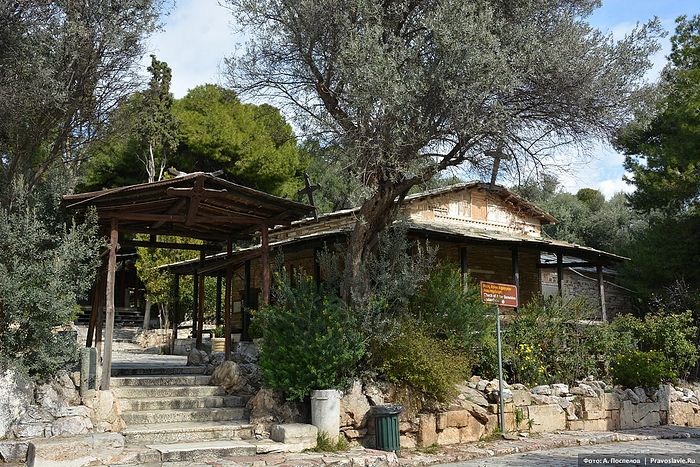 The Church of St. Demetrius the Bombardier in Athens. Photo by Anton Pospelov / Pravoslavie.ru
The Church of St. Demetrius the Bombardier in Athens. Photo by Anton Pospelov / Pravoslavie.ru
On November 8 (October 26 according to the old calendar), 1640 [1658 is also given by some sources.—Trans.], the feast-day of Great Martyr Demetrius of Thessaloniki, the Christians of Athens were to be exterminated according to the sophisticated scheme of Yusuf, the Aga (commander of a Turkish garrison in the Ottoman Empire) of Athens.
Yusuf, a cruel Muslim fanatic who knew about the Greek people’s love for St. Demetrius, decided to do away with the Christians of Athens who were going to pray at the churches dedicated to the great martyr. He ordered the cannons of the Ottoman garrison (located in the Acropolis) to be aimed at the neighboring little St. Demetrius’s Church in secret and wait for it to be filled with worshippers.
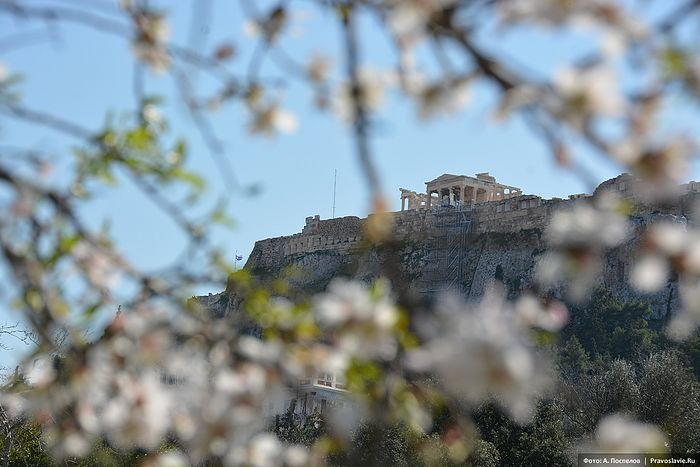 A view of the Acropolis. Photo by Anton Pospelov / Pravoslavie.ru
A view of the Acropolis. Photo by Anton Pospelov / Pravoslavie.ru
It should be said that the Acropolis, a steep-sided and flat-topped crag that rises over Athens around 500 feet high, has always been an ideal location for defense and the ruler’s residence. It was there that in 450 B.C. Pericles commissioned the famous sculptor Phidias to build an architectural complex which comprised the Parthenon, the Propylaea, the Erechtheion temple, and the Temple of Athena Nike. In the Byzantine era the Parthenon was converted into the Christian Church of the Virgin Mary. The Ottomans converted the church into a mosque and then into an armory. The Erechtheion was used as a harem, and the Temple of Athena Nike was eventually pulled down to make way for defensive installations. The Propylaea, formerly the monumental entrance to the Acropolis, became home to the Ottoman garrison and a battery was stationed there, the cannons of which, notably the big “Loumbarda”, were aimed at the twelfth-century little stone church at Yusuf’s command…
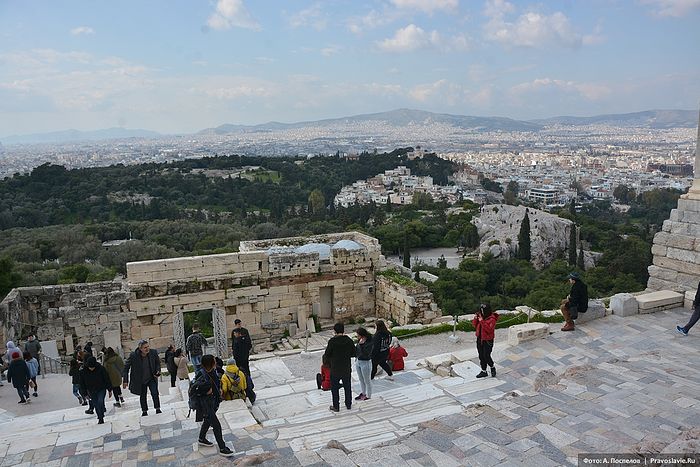 A view of Athens from the stairs leading up to the Propylaea. Photo by Anton Pospelov / Pravoslavie.ru
A view of Athens from the stairs leading up to the Propylaea. Photo by Anton Pospelov / Pravoslavie.ru
The Turk, who was only cold-bloodedly thinking about killing as many “infidels” as possible, by a special decree gave this humble church on Philopappos Hill the status of the principal Church of St. Demetrius in Athens. Feeling that there was something wrong there, Archbishop Anthimus of Athens called on the faithful to go to all the churches dedicated to the great martyr. Meanwhile, Yusuf really hoped that the majority of Christians would flock to the church he had chosen on the feast-day of St. Demetrius. Within shooting distance from his battery…
At that time Athens had 7,000 inhabitants, two thirds of whom were Christians. Gathering some 4,500 people beside the church and then massacring most of them by shelling them from all the cannons of the battery close by was quite attainable even in the seventeenth century.
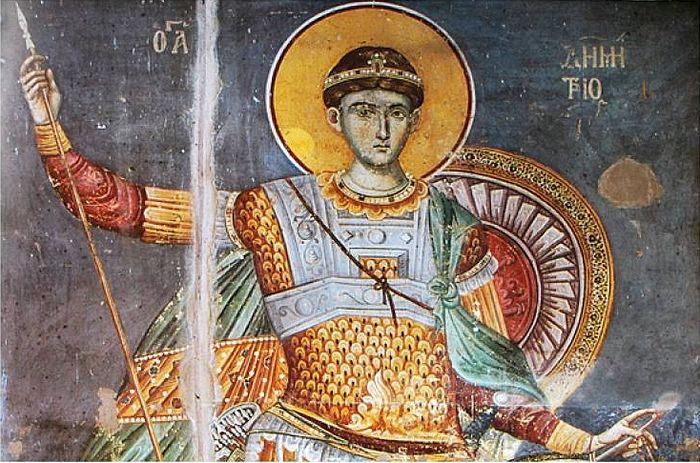 Great Martyr Demetrius of Thessaloniki. A fresco fragment
Great Martyr Demetrius of Thessaloniki. A fresco fragment
And the city would certainly have acquired thousands of new martyrs but for St. Demetrius’s intervention!
On the night of October 26 (according to the old calendar), when the Ottomans, having made all the calculations, turned all the guns towards the church and filled the rooms of the west part of the Propylaea with cannonballs and powder chock-full, a thunderstorm broke out. Lightning started flashing over the Acropolis, and one of them struck the ammunition stockpile.
This caused a very heavy explosion which wreaked havoc on the ancient buildings and destroyed not only the cannons and soldiers in the garrison but also Yusuf with his family. We cannot help but recall Haman, minister of the Persian King in the Book of Esther, who wanted to have all the Jews in the Persian Empire killed but in the end was himself hanged on the gallows he had prepared for Mordecay (Esther’s cousin) whom he hated.
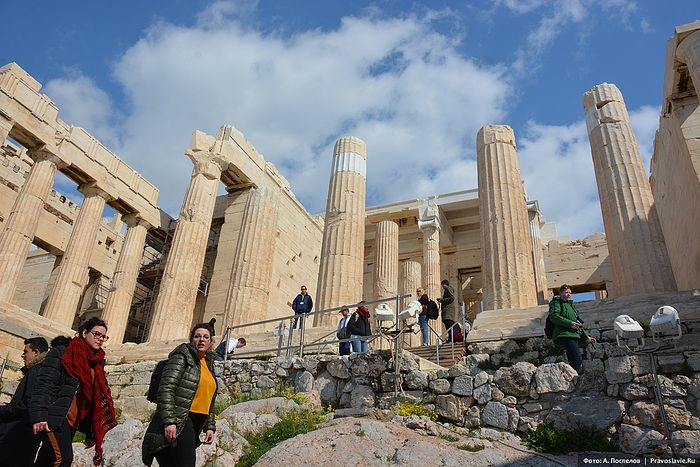 The Propylaea ruins. Photo by Anton Pospelov / Pravoslavie.ru
The Propylaea ruins. Photo by Anton Pospelov / Pravoslavie.ru
The story of the miraculous salvation of the Athenians was written down by the French traveler Jacques Spon (1647–1685), the first serious researcher of Athenian antiquities and the last learned European to see the Parthenon intact.
And in the memory of the Greek nation, Great Martyr Demetrius, whose relics rest in Thessaloniki and who is the city’s heavenly patron, also became the savior of ancient Athens, the “Bombardier”, the “Loumbardiaris”, who destroyed the villain Yusuf and his cannon battery with the “Loumbarda”—the giant cannon of the age.
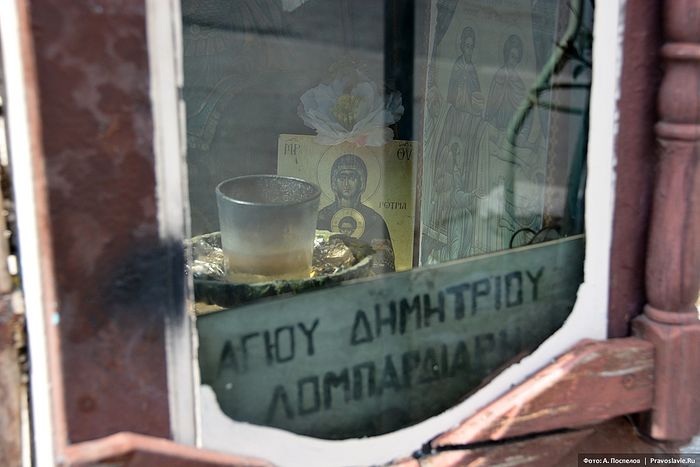 The diminutive chapel, smaller than human height, by the Church of St. Demetrius the Bombardier. Photo by Anton Pospelov / Pravoslavie.ru
The diminutive chapel, smaller than human height, by the Church of St. Demetrius the Bombardier. Photo by Anton Pospelov / Pravoslavie.ru
The church on Philopappos Hill stands to this day and can be found in all tourist brochures as “the Church of Agios Dimitrios Loumbardiaris”.
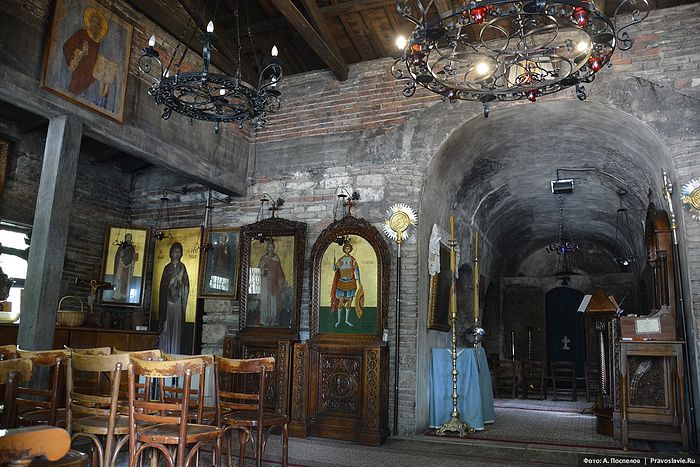 Interior of the Church of St. Demetrius the Bombardier in Athens. Photo by Anton Pospelov / Pravoslavie.ru
Interior of the Church of St. Demetrius the Bombardier in Athens. Photo by Anton Pospelov / Pravoslavie.ru

